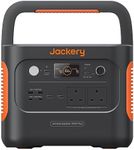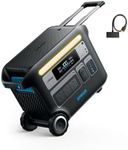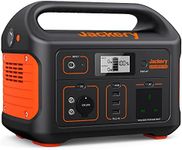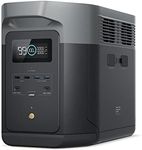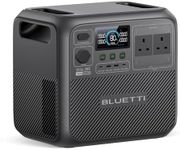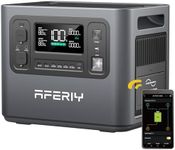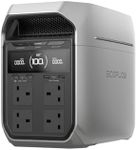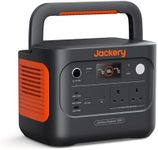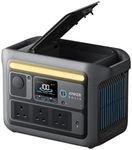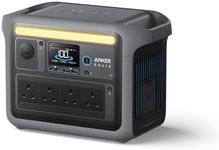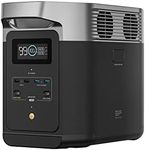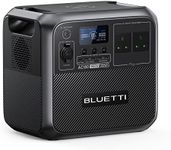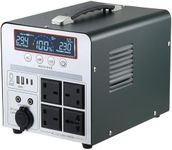Buying Guide for the Best Portable Power Stations
Portable power stations are versatile devices that provide electricity on the go, making them ideal for camping, outdoor activities, emergency backup, and even for powering small appliances. When choosing a portable power station, it's important to consider several key specifications to ensure you select the right one for your needs. Understanding these specs will help you make an informed decision and get the most out of your purchase.Battery CapacityBattery capacity, measured in watt-hours (Wh), indicates how much energy the power station can store. This is crucial because it determines how long the power station can run your devices. Higher capacity means more power and longer usage time. For light use, such as charging phones and small gadgets, a capacity of 150-300Wh might suffice. For more demanding applications like running small appliances or multiple devices, look for capacities of 500Wh or more. Assess your power needs based on the devices you plan to use and their power consumption.
Output PortsOutput ports are the various types of connections available on the power station to charge or power your devices. Common ports include AC outlets, USB ports, DC carports, and sometimes even USB-C ports. The importance of this spec lies in its versatility and compatibility with your devices. If you need to power a laptop, look for a power station with an AC outlet. For charging phones and tablets, multiple USB ports are beneficial. Consider the types and number of devices you plan to connect simultaneously to determine the right mix of ports.
Power Output (Wattage)Power output, measured in watts (W), indicates the maximum amount of power the station can deliver at once. This is important because it determines what kind of devices you can power. Low wattage (under 300W) is suitable for small electronics like phones, cameras, and lights. Medium wattage (300-600W) can handle larger devices like laptops, mini-fridges, and some power tools. High wattage (over 600W) is needed for heavy-duty appliances like microwaves or larger power tools. Match the power output to the requirements of your devices to ensure compatibility and avoid overloading the power station.
Recharge TimeRecharge time is the duration it takes to fully recharge the power station's battery. This is important for planning purposes, especially if you need to use the power station frequently. Recharge times can vary widely depending on the power station's capacity and the charging method (wall outlet, solar panel, car charger). Faster recharge times are more convenient but may come at a higher cost. Consider how often and quickly you need to recharge the power station. If you plan to use it in remote areas, a model with solar panel compatibility might be beneficial.
Weight and PortabilityWeight and portability are key factors if you plan to carry the power station over long distances or use it in various locations. Lighter models (under 10 lbs) are easier to transport and ideal for activities like hiking or camping. Heavier models (over 20 lbs) may offer more power but can be cumbersome to move around. Consider how you will transport the power station and choose a weight that you can handle comfortably. Some models come with handles or wheels to aid in portability.
Durability and Build QualityDurability and build quality determine how well the power station can withstand rough handling and harsh environments. This is important for ensuring the longevity of the device, especially if you plan to use it outdoors. Look for models with robust construction, reinforced corners, and weather-resistant features. If you need a power station for rugged use, prioritize those with higher durability ratings. Assess the environments in which you will use the power station and choose a model that can handle those conditions.

